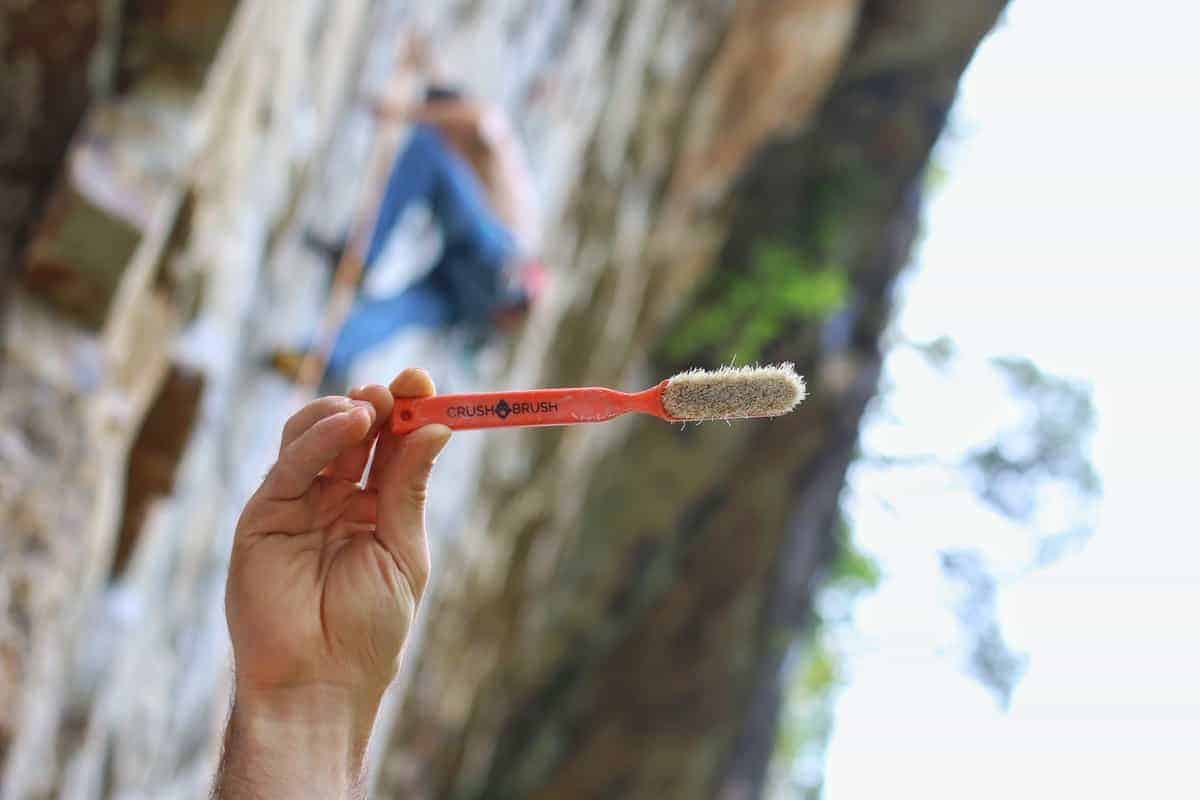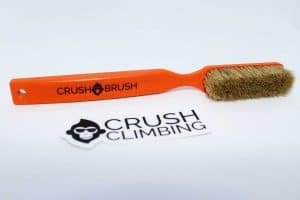Projecting a route or problem can be one of the most difficult and strenuous activities a climber will ever do. Often referred to as Redpoint Climbing, projecting is trying a single climb over and over again in hopes of one day sending it.
Preparing for a redpoint can takes weeks, months, or even years of training.
If you are projecting something, this means it is challenging you both physically and mentally.
“To climbing something you can’t, you must do something that you haven’t.”
Captain Crush
Projecting can have many different types of roadblocks that prevent you from sending the climb.
- You can’t do the Crux
- You are too pumped to finish the climb
- You can’t stay focused during the climb
- You have some underlying fear
There are two main things that stop you from successfully redpointing a climb.
- Your body cannot complete the climb
- Your mind won’t let you complete the climb
Let’s go over these in a bit more detail in the next sections
-
Crush Swag
Crush Mug
$14.99 – $16.55 Select options This product has multiple variants. The options may be chosen on the product page
Physical Aspect of Redpoint Climbing
Typically, the most obvious thing that limits your ability to redpoint a climb is your physical abilities.
Now, before proceeding let’s mention that no amount of voodoo magic will make a V4 climber send a V10. That being said, grades can be super subjective so their will always be things that slip through the cracks. For this article, we are only talking about highly trafficked, confirmed climbs.
You must set realistic goals for projecting!
A good rule for redpointing is to only pick climbs that are 1 to 2 grades above your hardest climb in the area (yes, you will want to be familiar with the climbing in the area).
You will also want the climb to be in your style!
If you can’t dyno, don’t start throwing yourself at a V8 dyno (those things are hard)! Pick something that works to your strengths. This will make the whole process easier.
Understanding Your Weaknesses
Once you have chosen the right climb you need to understand why you are physically unable to climb it.

- Are the holds too small?
- Is your core too weak?
- Are you struggling with body positioning?
- Is the beta not working out?
- Do you have the right shoes?
- Are you pumping out?
- Is a clip too hard?
Once you’ve determined where your weaknesses lie, you will need to start training.
Note: this is not a training article!
To discuss all the various ways to train would be a novel in and of itself. Here we are trying to get you thinking about what to train.
For example, if a crimp is feeling too small you should probably start training finger strength. This can be done by hangboarding, campusing, or limit bouldering.
Understand your weakness and
Also getting a good climbing brush to maximize friction never hurt
Eat Right
Giving your body the proper nutrition is key to performing at your peak.
Eating correctly is a complicated thing. It should be scientific, but it seems like every day “they” come out with some “new” discovery that “revolutionizes” nutrition (hope you can hear the sarcasm).
However, some things about nutrition are quite self explanatory.
For example, eating pizza and french fries every night for dinner probably won’t make you climb harder.
Without going into too much detail lets just say this. If you eat generally clean foods that are found on the outside aisles of the grocery store (meats, vegetables, fruits, nuts, etc.) then you should be heading in the right direction.
Body Weight
F=ma
Isaac Newton
We all remember this one from highschool physics right?
Force = Mass * Acceleration
Force being weight, acceleration being gravity, and mass being you.
It’s no secret that weighing less will make climbing easier. That being said, if you lose muscle then the opposite is more likely.
Now we aren’t telling you to lose weight, we are only trying to make you aware of the effect weight has on climbing.
Many training regimens have you bulk during intense training and then try to slim down right before redpointing.
Do your own research on this. Cutting weight during climbing can make you susceptible to injury, so be careful.
Mental Aspect of Redpoint Climbing
The most overlooked aspect of climbing is Mental fortitude.
In the different disciplines of climbing (Bouldering and
Bouldering
Pebble wrestling requires extreme power and technique. It also requires
Bouldering often requires climbers to:
- Try crux moves over and over again
- Climb over rocky terrain
- Perform highball top outs
Have you
Do you feel like moves are harder the higher they are off the ground?
Does the landing zone play a role in how hard you are trying?
You have to train your brain to corporate with your body. If you can physically do something then you have to just do it. This sounds silly, but this is often the reason we can’t send.
A few tricks to beating this is to:
- Meditate
- Visualize
- Replicate
Once you’ve relaxed, focused, and know you can do it, then
Sport Climbing
Sport climbing requires a vast amount of mental awareness from the climber.
Heights can amplify the minds natural instincts to be anxious. You must learn how to suppress this to be able to climb at your peak level.
In sport climbing the mind is challenged in a number of ways.
- Run out sections
- An insecure clipping position
- Being extremely pumped
- Trying to rest
- Sticking the crux and not screwing the top up
Being able to put together a whole route is redpoint climbing at its finest.
Learn to breath and only try as hard as you need in each section.
Final Thoughts
We hope you enjoyed this article on redpoint climbing and projecting.
Please comment below with your thoughts or concerns.
Also check out our new article written by Brandon Sullivan on Onsight Climbing



